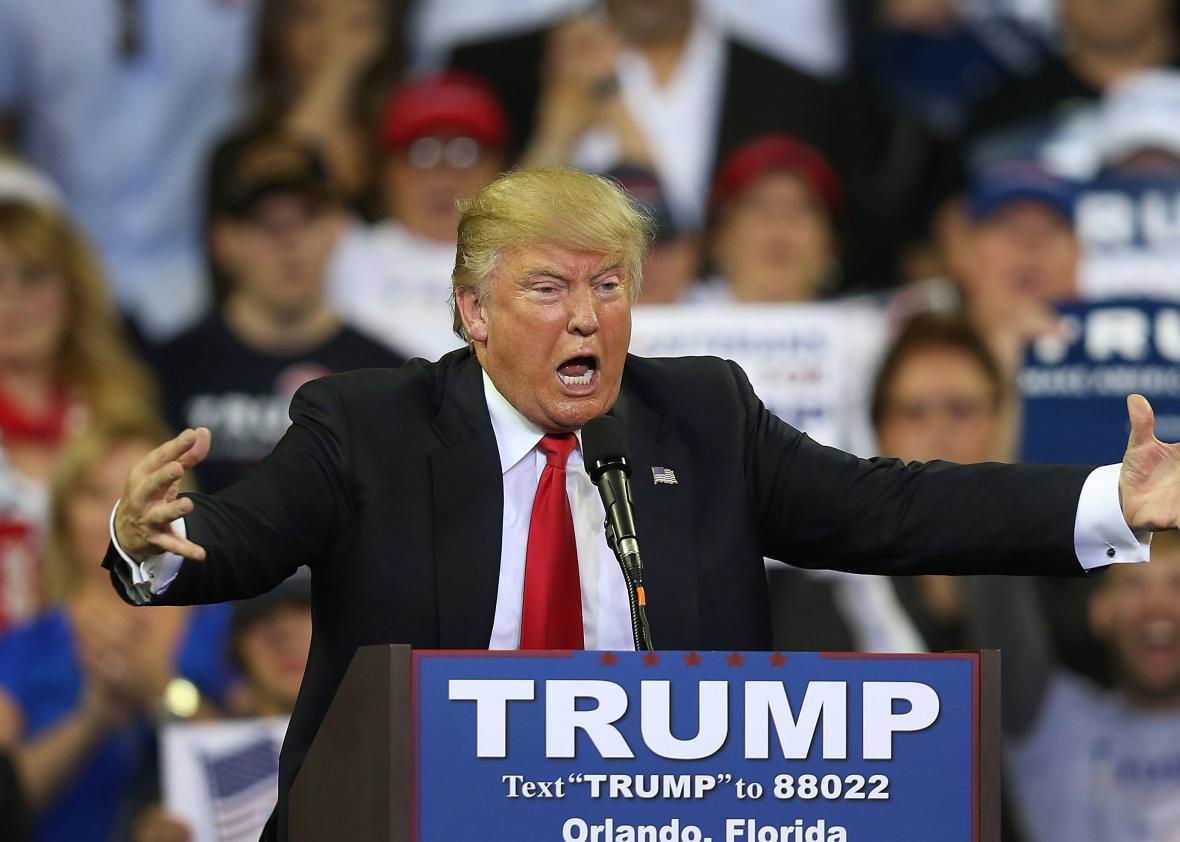Sometimes, worrying about Donald Trump’s individual policy proposals feels a little bit besides the point. If a nuclear warhead were sailing toward your hometown, you wouldn’t dwell on whether it was 300 kilotons or 500 kilotons. Likewise, when a belligerent demagogue is riding a wave of white, working-class xenophobia and racial animus toward a major party’s presidential nomination, the exact dimensions of his domestic platform probably aren’t a first-order concern.
But, man, is Trump bad on policy. On Monday, for instance, the nonpartisan Committee for a Responsible Federal Budget analyzed his plan to repeal and replace Obamacare and concluded that it would leave an extra 21 million Americans without health insurance. In other words, it’s almost all repeal and no replace.
Trumpcare is a radically bare-bones version of the generic conservative blueprint for health reform—a variation so insubstantial that it does scarcely a thing to expand health coverage for those who have trouble affording it. The Republican front-runner would start by nixing Obamacare in its entirety, which could increase the ranks of the uninsured by some 22 million, according to the CRFB.1 To make up for it, Trump would eliminate regulations that prevent Americans from buying individual health coverage across state lines, which would allow them to shop for bargains in states where regulations let insurers offer less comprehensive, and therefore less expensive, plans.2 He’d then subsidize that coverage by making insurance premiums tax-deductible for people who buy on the individual market.
The problem is that none of this would really expand health coverage much. In late 2008, the Congressional Budget Office concluded that letting Americans shop for cheap insurance across state lines would merely reduce the number of uninsured by about 400,000. Tax deductions would help another 700,000. The CRFB looks at those two figures and concludes that Trumpcare would only help 1.1 million people get insurance. The ranks of the uninsured would swell from 27 million uninsured, as currently projected, to 48 million. Trump’s website does say it would “review basic options for Medicaid” to make sure “no one slips through the cracks.” But no amount of duct tape and gold leaf is going to fix the giant gash Trump would leave in the health care system.
Why are Trump’s two big health-reform ideas ineffective? Letting Americans buy across state lines sounds like a great, pro-market health care fix in theory—simply push aside lots of burdensome state regulations and let competition drive down prices. The problem is that regulations aren’t the only reason insurance prices vary so much from state to state; some parts of the country are simply older and less healthy than others. So the gains of letting someone in highly regulated New York shop in Alabama might not be that great. Letting younger Americans buy superinexpensive insurance would have the perverse effect of making coverage less affordable for sicker and middle-aged customers, whose plans would no longer be subsidized by premiums from a bunch of hale twentysomethings. And, of course, creating an interstate market would do nothing to ensure that people with pre-existing conditions, who were often denied coverage pre-Obamacare, could find insurance.
Making insurance premiums tax-deductible similarly comes off like a useful idea at first, since corporations get the same subsidy when they spend on group coverage. But in order to get much of a benefit from deductions, customers have to spend a lot on insurance in the first place, which makes them less than helpful for cash-strapped families in need of budget insurance. That’s why Republicans like Marco Rubio have suggested offering a set tax credit instead, which would at least guarantee everybody in the individual market a certain minimal level of assistance.
And there you have the problem in a nutshell. Donald Trump has barely even proposed a credible conservative vision of health reform. Instead, he’s now on the record with the bankrupt idea that we should repeal Obamacare and replace it with virtually nothing at all.
1 This number seems a tiny bit low to me. The latest Congressional Budget Office estimate, which the CRFB is supposedly using, says Obamacare should help insure 24 million by 2018 (as of now, it’s probably somewhat more than 16 million). But, again, this is nitpicky, nuclear warheads and all.
2 At least this is how most policy analysts are interpreting the muddled description of the proposal on his campaign website.
